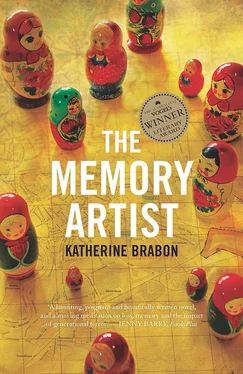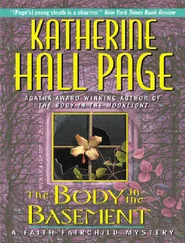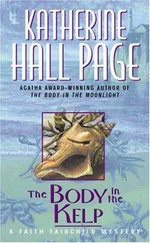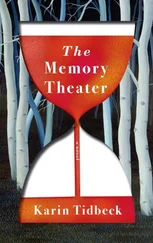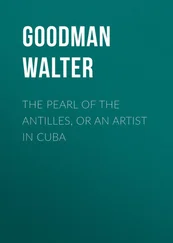The room stayed gloomy; the midnight glow couldn’t find its way inside. The smoke from our cigarettes met the orange lamplight, mingled with the dust in the air. We could have been by a weak campfire on the endless landscape of the steppe. A moth flitted around the lamp and another lay dead nearby, though when the first moth rested from its desperate flutters neither looked alive. Before going to bed I went to the bathroom, but couldn’t use the shower because the taps had rusted tight. When a little water did come out, it pooled in a clogged drain. A copper cloud of water spread and a metallic smell rose up. I turned off the tap but the water stayed in its silent pool. I gave up and went back to the living room, where Oleg lay quiet. The moths were still.

From the harbour at Kem it took three hours by boat to reach Bolshoy Solovetsky Island. Kem had been a mere transit land, a place where prisoners waited for transportation to the islands beyond, and as the boat rose and fell on the waves it felt as though we had crossed a threshold, an unseen border into the past. I thought of how Bulgakov mentioned Solovetsky in The Master and Margarita . Ivan the poet declares that Kant should be sent there as punishment for writing his own ‘proof’ as to the existence of God. I wondered if a person visiting the island would feel as I did upon approaching it, feel haunted, if they didn’t already know the history of the place. Maybe, I thought, some things are absorbed in a landscape and left there for those who come after. Perhaps we were in a place where one could comprehend, as far as one could, all that was unknown about the past. Some things had to remain a mystery in order to be understood. It was as if there was a truth accessible only through certain means: by walking over places of memory or staring for as long as we could bear it, into the eyes of unknown faces in old black-and-white photos or in the most heartbreaking works of art.

From a distance the monastery buildings, surrounded by eight towers and seven gates, appeared to float just above the water and just below the clouds. As we got closer to the land, the monastery looked down on us, rising up into the sky. In the sunlit waters around our boat, onion-domed towers and fortress walls moved in their rippled reflection. Sparks of sunlight hit the sea. The reflected buildings were lifelike as though the true settlement was down there beneath us. I imagined the citizens of such a place to be submerged statues, flesh grey and wasting.
Thick walls protected the monastery, and for a strange minute I thought we would be denied entrance, although by whom I wasn’t sure. Oleg told me that until 1965 it had not been possible to visit Bolshoy Solovetsky Island. A museum was here now, he said, with a settlement village of just over a thousand people. The monastery was in the uncertain, grey hands of neither the navy, who took over the old camp in 1939, nor the Church, who no doubt wanted it returned to Orthodox control.
We reached land. Beyond the walls of the monastery I could see multiple navy-blue domes squatting on white towers. Tufts of green grass covered the land around the monastery. Further away I could see a small group of cows, heads bowed to the ground. Blue flowers scattered the grass, the sun shone, and a bird made miserable retching noises far above us. We began walking inland. Forests of spruce and pine hovered close and I felt their cooling green breeze.
There were wooden cottages, marked by red-brick chimneys, fallen wire fences, and here and there a larger building that might have been a former barracks. It was hard to tell what anything had been once. The dusty roads seemed no longer useful, just lonely, pale snakes twisting through a ghost town that held only the subtlest evidence of past occupants.
Oleg’s pace slowed as we approached the monastery and its small settlement of church buildings.
Up close I could see that the enormous thick watchtowers, hundreds of years old, were made of large round stones. Like eternal barricades, greying thickset walls connected the towers.
An eerie breeze swept over from the water and I wondered why such a stronghold was necessary at the end of the earth. Probably it was the atmosphere that caused me to think that the strength of those walls stood for protection from some ancient threat, a threat in the air, of spiritual violence rather than physical.
There were cracked facades, peeling paint, forgotten pathways, loose stones, holes in the walls. Oleg said that work had begun on reconstructing the buildings, restoring them to their former state, before the camp was there. It seemed to me impossible that there had once been thousands there when on that afternoon we were the only ones.
I started to think that maybe many such buildings were troubled vessels, full of an unknown substance. Even when abandoned they aren’t empty, but we don’t know exactly what gives them their heavy presence. But in some cases we did know the sources of such auras: I remembered how Mikhail Sergeyevich had called the Lubyanka a haunted building. And it was true that it still housed the sons and grandsons of the KGB, just as the roads we walked over in Moscow were once pathways for the Black Maria trucks bound for shooting ranges, and from the hallways of communal apartments footsteps in the middle of the night had once struck terror into the chests of millions. I’d grown up among all of those places too, of course, just like Anya and our friends. As children of the Freeze, we had walked the same streets in the same years.
And the act of taking a stone all the way from Solovetsky to Moscow, to make the monument we had petitioned for, was surely a sign that we give things and objects and matter a little of our own minds—we give them the pasts that they carry. The memorial stone would first travel by boat, Oleg had told me, from the island to Arkhangelsk, and from there journey by train all the long way back to the city.
Back to the city. It was as if Oleg was calling the stone’s arrival there, in Moscow, its return. It was going back, back to Moscow, he had said. And in a way I understood that its presence would be a kind of return for those who did not, that somehow the stone had already been there, in Moscow. I wondered at its vast weight, surely immeasurable, and whether the stone would in fact be even heavier than most would think, as I sometimes thought the piles of paper in an archive might be far heavier than the historian would ever have anticipated.
Ireturned to St Petersburg from the dacha at the end of August. I took the elektrichka train as I had a few weeks before. It felt as though a lot of time had passed. The neighbours had left only two days before me, but that also seemed a far longer absence. From the window of the train the scenes going back looked completely different; I recognised nothing.
From Finland station I entered the metro. The dusty metallic heat pressed all kinds of city memory forcefully back over me, a heavy and oppressive feeling. I rode the train to Primorskaya. It was early evening, warm. I could hear music, a cawing electric guitar, coming from the bar near the intersection. I took the bus to Korablestroiteley Street. It was quiet as I walked between the tall apartment towers. Families would still be at their summerhouses for the holidays, or maybe at home together for their evening meal.
I rummaged in my bags for a while before I found my keys to the apartment building. On the tiled floor of the foyer a discarded newspaper lifted a page in the gust from the door. Light flickered in the small elevator. After slowing, straining, the elevator stopped between floors with a clink and echo. I waited a minute. It didn’t move, so I called the operator. Thirty minutes , said the voice from the silver speaker. He sounded bored. I said thanks, probably sounding just as bored. Though I should have told him that, without a watch, I had no way of measuring thirty minutes, hanging there between two floors.
Читать дальше
